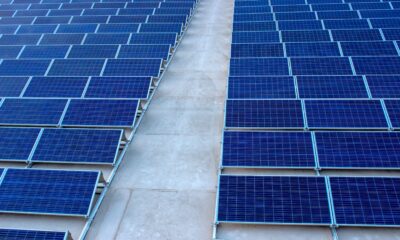

Energy
Wind Turbine Tower Market In Asia-Pacific Will Hold Dominance But Will Fall By 2020
The Asia-Pacific (APAC) region is predicted to hold its global leader status of the wind turbine tower market until 2020, after which its value will decrease from $9.62 billion in 2015 to $5.5 billion after this period.
This represents a negative compound annual growth rate of 10.5%, according to research and consulting firm GlobalData.
The company’s latest report states that the decline can primarily be attributed to the decrease in wind capacity addition and falling tower costs. China, for example, added 33 Gigawatts (GW) of wind capacity in 2015, which represents 86.5% of APAC and 49.6% of global wind addition in the year. However, annual capacity addition in the country is expected to witness a decline during the 2016–2020 period, as its target to install 250 GW of wind capacity by 2020 can be achieved with only 22 GW a year.
Rahul Khatri, GlobalData’s Analyst covering Power, explains: “The decline in the tower market in the APAC region is in line with global trends, as the overall wind tower market is expected to drop from $17.2 billion in 2015 to $14.5 billion by 2020, mainly due to declining prices and increased tower heights in larger turbines. Indeed, tower prices are expected to fall by 7% by 2020.”
The market will also be heavily restricted by a lack of sufficient grid infrastructure, as the industry struggles to upgrade existing infrastructure and construct new facilities to meet demand. These limitations affect the entire value chain and increases development time.
Khatri continues: “The unprecedented growth of the wind power industry has also put immense pressure on the wind turbine component manufacturers making towers, rotor blades, gearboxes, bearings and generators. Rising demand has increased the production capacities of towers as new players entered the industry and existing providers increased their capacity. This sudden rise of industry growth has created supply chain defects and strained supply lines.”






























